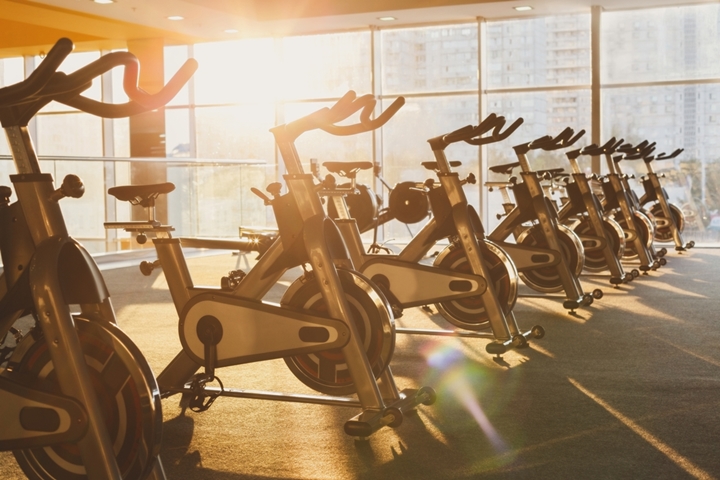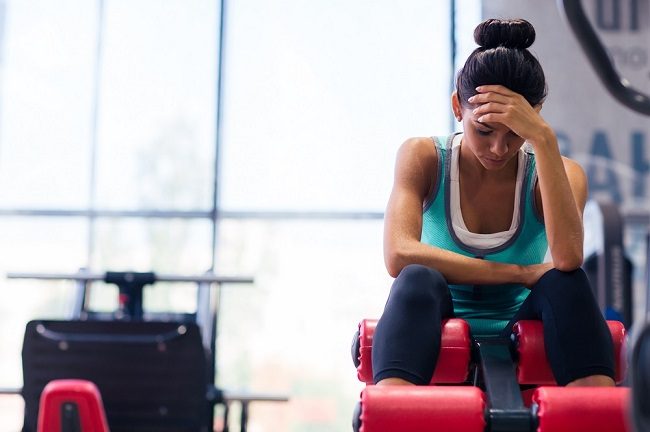After being completely focused on your pregnancy for nine months, it is now time to adapt your body without the baby bump. As you heal and get into the swing of new motherhood, you might start preparing your postpartum body with light exercise or a walk. It may take up to a year to start feeling and looking like your old self again, but with patience and persistence you can definitely achieve a healthy postpartum body.
Here is our month-on-month guide to exercise your postpartum weight off!
Month 1:
Only after your doctor has given a nod and you’re feeling ok, you can begin with a light walk, even if it’s for only 10 minutes or on your terrace. If walking causes or worsens any bleeding, stop immediately and consult your doctor.
Month 2:
Now you may gradually increase the length of your walks to 20-25 minutes a day. Try to walk at least five days every week. Building consistency is key!
Month 3:
You can now start to incorporate a Kegel routine, re-strengthening or even re-familiarizing yourself with your pelvic floor muscles which are affected during the process of giving birth. You can try this 3-4 times a day:
- Lie on your back with your knees bent and your feet flat on the floor.
- Tighten the muscles of your vagina (as if you’re trying to interrupt the flow of urine when going to the bathroom).
- Hold for a count of ten, then release. Repeat ten times.
- Do at least three or four sets, three times a day.

Month 4:
In the fourth month post your pregnancy, you can think of adding a light workout like stretching or yoga. They are both great forms of exercise for the new mother whose body is still recovering but yoga definitely helps you strengthen your pelvic a lot. You can begin with:
- Sit upright and breathe deeply, drawing air from the diaphragm upward.
- Contract and hold your abs tight while inhaling and relax while exhaling.
- Gradually increase the amount of time you can contract and hold your abs.

You May Also like: Let’s Talk About Postpartum Weight
Month 5:
The fifth month postpartum is a good time to really start to add some form of vigorous and more regular exercise back into your life. Think about motivating yourself by joining a gym, signing up for classes, or even hiring a personal trainer. You should also increase your walks to at least 45 minutes a day.

Month 6:
In the 6th month, you can begin with a new challenge like swimming which is gentle on the joints and pelvic floor, but is great for strengthening the core and back muscles.

Month 7:
You can add more cardio to your earlier set routine of walking by incorporating step climbing or a little jogging to it. For toning your body, you can think about trying out Pilates. It is fabulous for the postpartum body because it strengthens your core, reduces stress, gets blood flowing, and increases flexibility.

Month 8:
By now you must walk up to 60 minutes a week. Along with it attend a 45 minutes class 3 to 4 times every week. This will help your body to improve its metabolism and you can even alternate between cardio and strength building workouts.

You May Also Like: Workouts Every Woman Should Do To Stay Fit
Month 9:
Exercise six days a week. Follow your normal walking routine for four days; on two days, you can add treadmill or stepper for some added cardio.

After following this exercise schedule for the next nine months, you will see your body transform in to a healthy and fitter body. Continue with this routine for upto one year to lose all the postpartum weight. Pregnancy is a wonderful phase and even though you might be in a rush to get rid of that pregnancy weight, you must listen to your body and its signs and do only as much as your body allows. Good luck!


 Traqade
Traqade





































[…] you would all have heard of the Kegel exercise but did you know that the Setu Bandhasana also works on the same pelvic muscles? Besides it […]
[…] you could all have heard of the Kegel workout however do you know that the Setu Bandhasana additionally works at the similar pelvic muscle […]
Good idea to slowly ramp up your exercise postpartum. New mothers need to take it easy rather than focusing on immediate weight loss.
Welcome to this post. But a two-piece toilet has a separate tank and bowl that are bolted together during installation. This design makes it easy to transport and install, as each what is a two piece toilet component that can be handled separately. Two-piece toilets are widely available, cost-effective, and offer a variety of flushing mechanisms and styles. They are a popular choice for residential bathrooms due to their affordability and ease of maintenance.
The article on a month-on-month exercise plan for postpartum weight management offers a structured approach to achieving fitness goals gradually and sustainably. Just as staying consistent is key in fitness, enjoying an engaging Android game like Fire Kirin can be a fun way to relax and unwind during breaks from daily routines.
Great tips for managing postpartum weight! It’s so important to stay consistent with exercises and find a routine that works. While you’re focusing on staying healthy, if you’re looking for a fun way to relax in between workouts, click here to download firekirin game . It’s an exciting and engaging game that can keep you entertained and unwind after your workout sessions!
Postpartum weight management is such an important topic, and this article provides a practical month-by-month exercise plan that’s truly helpful for new moms. Staying consistent with fitness routines can make a huge difference. For those looking for a bit of leisure entertainment as well, this website provides fire kirin apk for a fun gaming experience.
This is a very helpful guide for managing postpartum weight and staying active! A month-on-month plan like this can really make a difference in how you feel. On a different note, if you enjoy mobile gaming, click here to download Fire Kirin APK . It’s a fun and exciting game with great visuals and engaging gameplay to keep you entertained!
Enhance your photo editing skills with Download Wink Apk Mod. Its premium features and intuitive interface make it a standout choice.
This app is a blast! Download Bombitup makes it so easy to send multiple messages at once. Perfect for harmless fun
I’ve been hooked on Latest APK Game Vault 777 APK lately. It’s packed with all my favorite games, and the best part is you can play anytime, anywhere. Definitely worth a download!
I switched to Crunchyroll Premium APK recently, and the difference is amazing! The HD quality is stunning, and getting simulcast episodes the same day as Japan is a game changer. Highly recommend it!
This is by far the best volleyball game I’ve played on mobile. The Spike APK gives you access to all characters and skills, making it perfect for those who want the full experience without limitations.
The original menu at 7 Brew has always been a fan favorite, but learning about their secret menu and rewards program takes things to the next level. It’s great to see a coffee spot offering so much variety and making the experience even better for loyal customers.
I love how the 8 Ball Pool Mod Latest App gives access to all the premium features for free. Now I can unlock the best cues without spending a dime.
I love how the 8 Ball Pool Mod Latest App gives access to all the premium features for free. Now I can unlock the best cues without spending a dime.
Este plan de ejercicios mes a mes para la recuperación posparto es muy útil y bien estructurado. Es importante tener una rutina progresiva que ayude a recuperar la fuerza sin presionarse demasiado. ¿Alguien ha probado este enfoque y ha notado buenos resultados? Si necesitas calcular el tiempo de tus entrenamientos o actividades diarias, suma de horas, minutos y segundos con esta herramienta práctica y fácil de usar.
Developing a structured, month-by-month exercise plan is essential for effectively managing postpartum weight loss. Such a plan not only aids in gradual weight reduction but also promotes overall well-being during the postpartum period. For those interested in diversifying their leisure activities, download the latest version of Fire Kirin 777 Apk which offers a variety of engaging fish shooting and arcade games.
Download Game Vault 777 latest version for Android. It is an application with multiple games, high quality graphics, user friendly interface, and more features. Tap on the link and checkout the full features of this app.
sportszino is a platform valid for all types of players to play the available games there are no age restrictions to play the games everyone can play the games. In this app, you can earn real money by playing the games you have to create a fantasy team participate in events, and earn real cash by winning the games.
Pandamaster 777 is a new exciting app that is becoming really popular among players all around the world. Download Panda Master 777 APK as it offers 25+ engaging fish games and 23+ other gaming options along with stunning graphics and immersive sound effects.
Vblink777 club is a popular gaming mobile app that lets users earn money by playing engaging games for free. Widely regarded as one of the top gaming apps in US, This App offers an exciting way to make money while enjoying a fun5, interactive experience.
Milky Way 777 is an online gaming hub with exciting mobile games offering fun and winning opportunities. It provides you with a hundred fish table games, keno, and slot machine games to keep you entertained.
Download the latest version of 8 Ball Pool with advanced features, unlimited coins, and extended guidelines. Enjoy premium gameplay today, completely free and secure.
This is such a helpful month-by-month breakdown for postpartum recovery 👏. I like how it emphasizes patience and gradual progress rather than rushing into things. Just like with fitness, cricket fans also need patience right now because everyone is eagerly waiting for the Asia Cup 2025 in the UAE. It’s going to be one of the biggest tournaments of the year with top Asian teams competing. If anyone here is planning to catch the matches live, 2025 Asia Cup tickets are already in high demand, so it’s worth checking early before they sell out. 🏏
Excellent article on staying consistent with your fitness routine! It reminded me how important it is to keep things engaging — just like how gaming platforms such as Fire Kirin 777 use smooth design and reward systems to keep users coming back. Thanks for the inspiration!
https://firekirin777download.com/
Really helpful breakdown of easing back into fitness after childbirth. I like how the month-by-month approach focuses on recovery first and not rushing results. Also, the reminders about listening to your body were on point. I’ve been collecting useful wellness and routine tips on my site too, in case anyone wants to read more: https://pvzfusionfree.com Thanks for the thoughtful guidance here!
This is a thoughtful, realistic plan for postpartum recovery. It’s reassuring to see an approach that emphasises gradual progress, gentle exercise, and listening to your body. As someone who values consistency even in my work life, I appreciate the reminder that recovery doesn’t have to be a sprint — small steps, done regularly, add up.